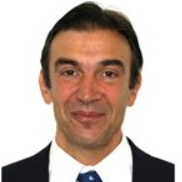Stem Cell Therapy in Oral and Maxillofacial Region
A special issue of Cells (ISSN 2073-4409). This special issue belongs to the section "Stem Cells".
Deadline for manuscript submissions: closed (29 February 2020) | Viewed by 88728
Special Issue Editor
Interests: craniofacial genetics; stem cells; teeth; imaging systems; signalling molecules; tissue regeneration; dental pathology; regenerative therapies; personalised medicine
Special Issues, Collections and Topics in MDPI journals
Special Issue Information
Dear Colleagues,
Novel cell-based regenerative therapies for the reconstruction/repair of tissues and organs of the oral and maxillofacial regions such as teeth and bone are very challenging. Repair or reconstruction of teeth and maxilofacial tissues remains a significant clinical problem that requires interdisciplinary approaches in order to be solved. To date, there is not an established and reliable cell-based treatment for the repair of these tissues. Stem cells isolated from teeth or other oral tissues are able to differentiate into osteoblasts, chondrocytes, adipocytes, pericytes, and neuronal cells. The close association of stem cells with neo-vessels in orofacial diseases and their relation to molecular signaling pathways is important in their regulation in order to form dental and maxillofacial-specific cells. The formation of new dental, bone, and epithelial tissues using regenerative therapy approaches would be a major improvement for the treatment of oral and maxillofacial diseases and traumas. These tissues are complex, since they are composed of a variety of cells that are controlled by distinct physical and molecular signals. The importance of these cues has been recognized, and the aim within the tissue engineering and biomaterials communities has been to tailor them to elicit specific biological responses.
Prof. Thimios A. Mitsiadis
Guest Editor
Manuscript Submission Information
Manuscripts should be submitted online at www.mdpi.com by registering and logging in to this website. Once you are registered, click here to go to the submission form. Manuscripts can be submitted until the deadline. All submissions that pass pre-check are peer-reviewed. Accepted papers will be published continuously in the journal (as soon as accepted) and will be listed together on the special issue website. Research articles, review articles as well as short communications are invited. For planned papers, a title and short abstract (about 100 words) can be sent to the Editorial Office for announcement on this website.
Submitted manuscripts should not have been published previously, nor be under consideration for publication elsewhere (except conference proceedings papers). All manuscripts are thoroughly refereed through a single-blind peer-review process. A guide for authors and other relevant information for submission of manuscripts is available on the Instructions for Authors page. Cells is an international peer-reviewed open access semimonthly journal published by MDPI.
Please visit the Instructions for Authors page before submitting a manuscript. The Article Processing Charge (APC) for publication in this open access journal is 2700 CHF (Swiss Francs). Submitted papers should be well formatted and use good English. Authors may use MDPI's English editing service prior to publication or during author revisions.
Keywords
- stem cells
- dental pulp stem cells
- vascularization
- innervation
- hard tissue formation
- scaffolds
- nanotechnology
- signalling molecules
- epithelial stem cells
- dentin
- bone






